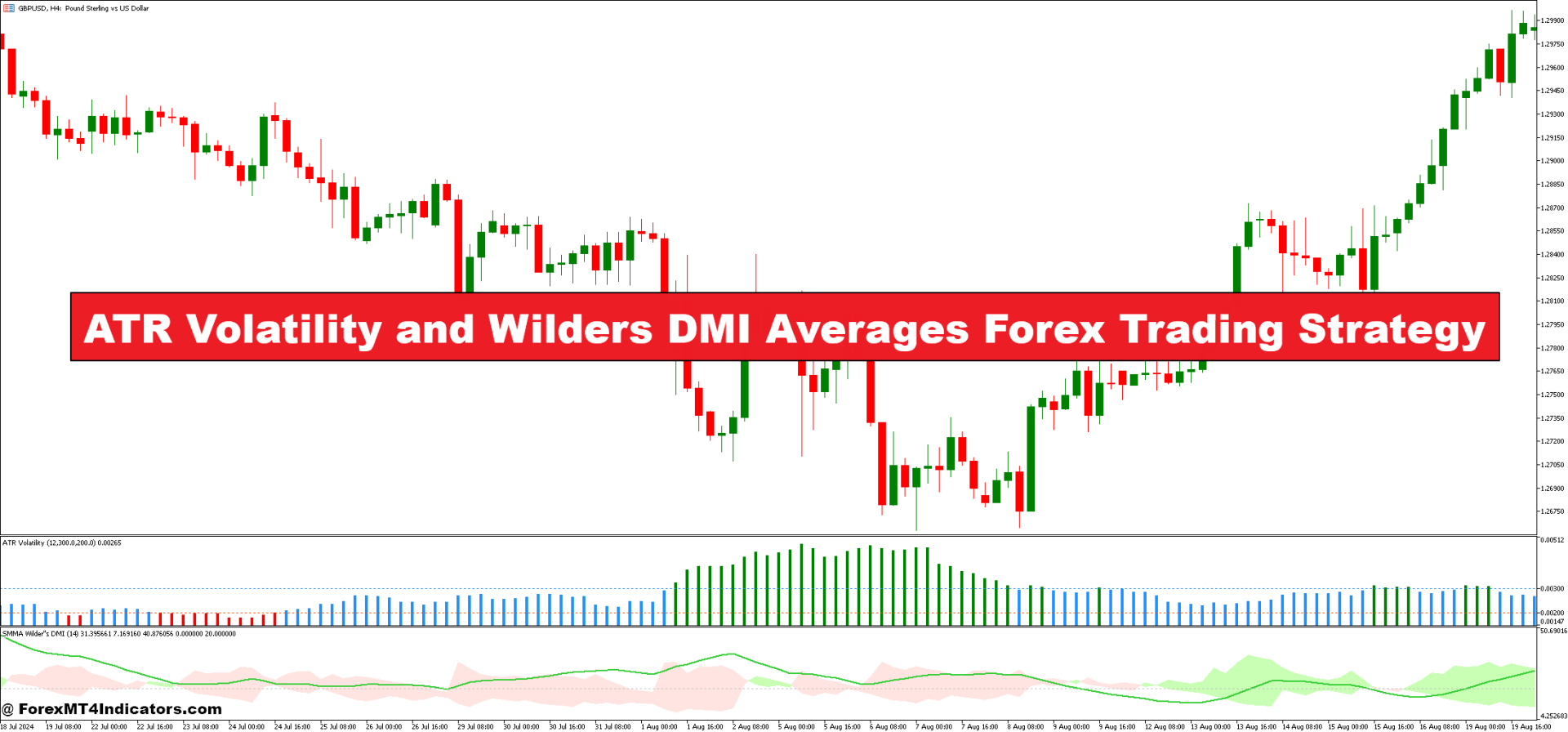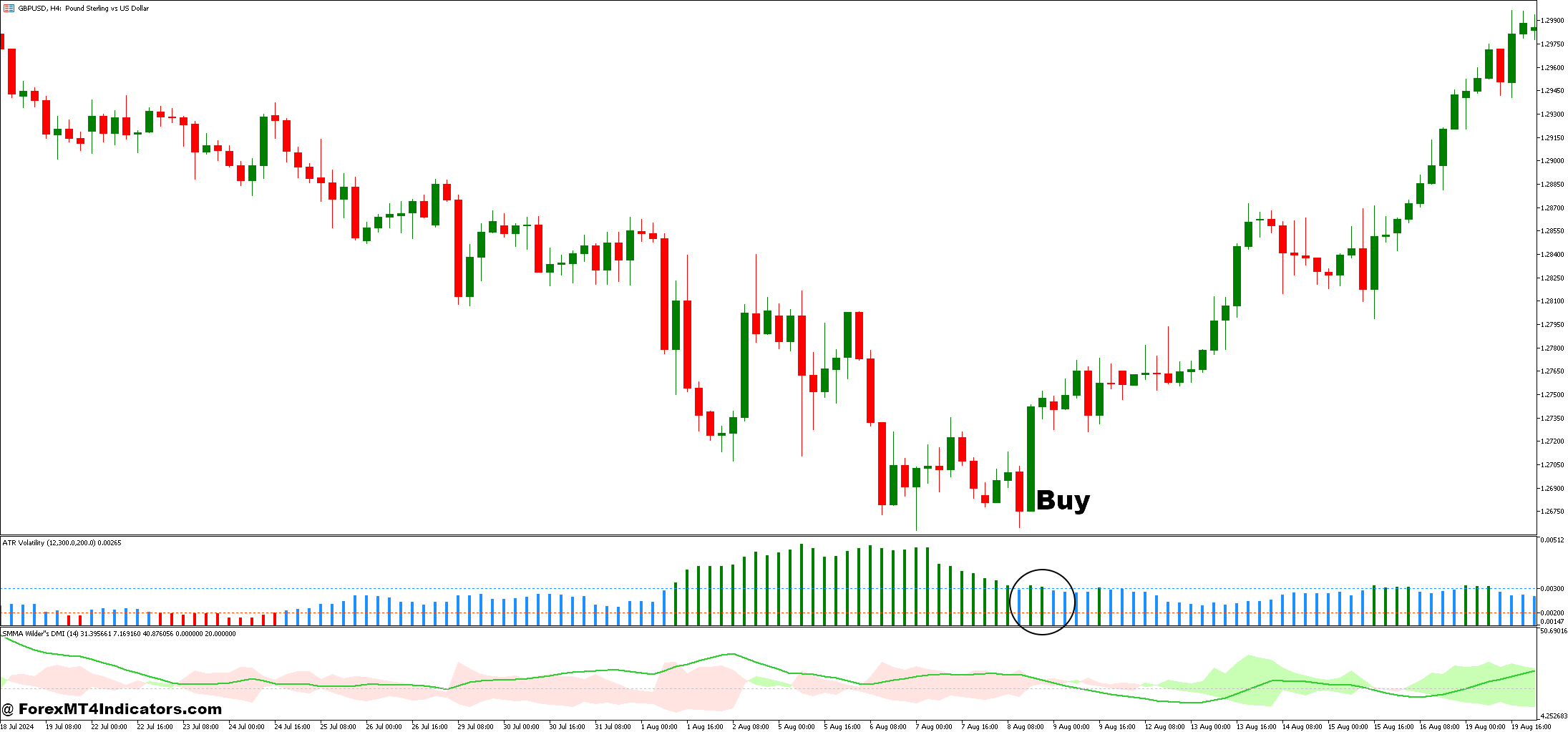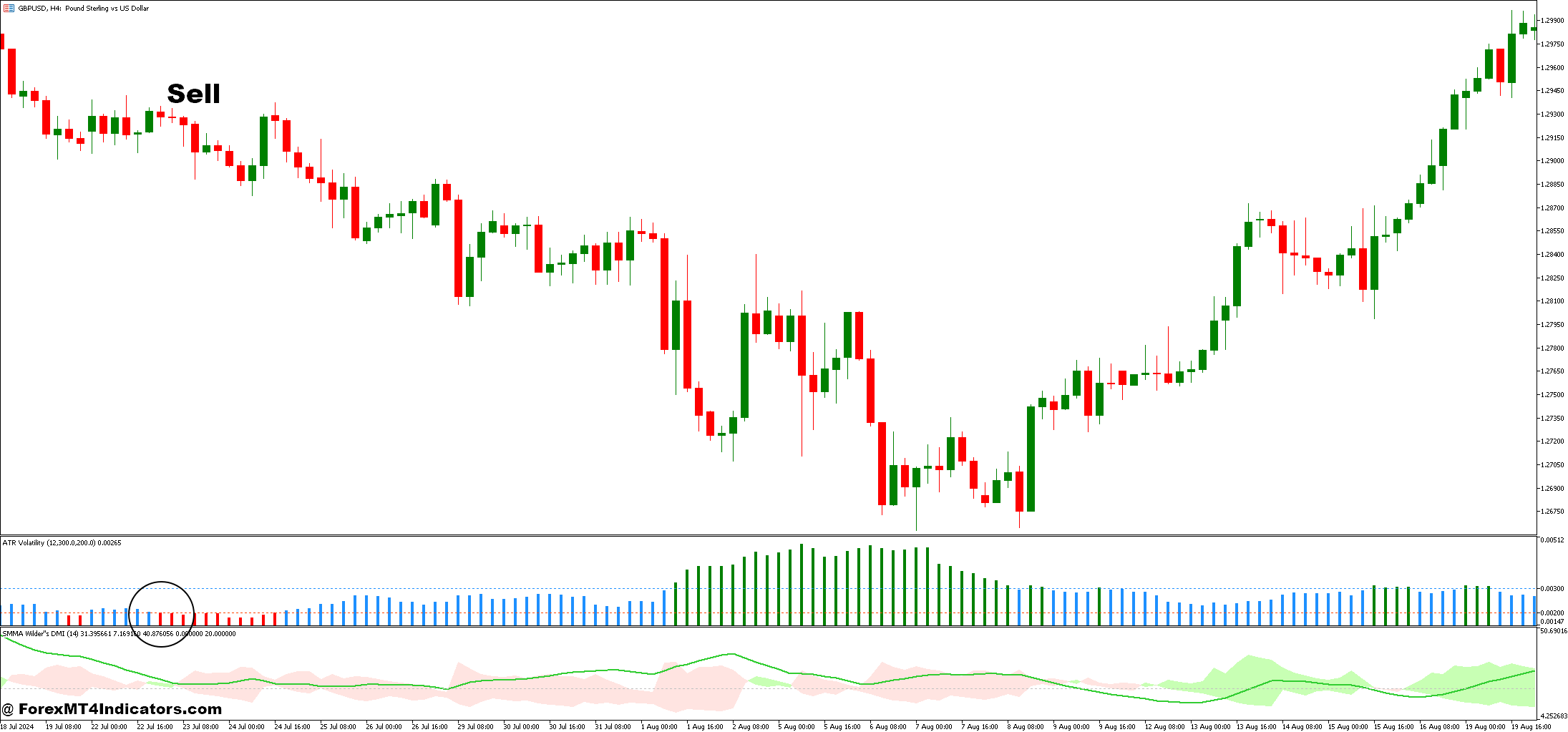The ATR Volatility and Wilders DMI Averages Forex Trading Strategy offers traders a dynamic approach to navigating the volatile forex market. At its core, this strategy leverages two powerful technical indicators: the Average True Range (ATR) and Wilder’s Detrended Oscillator (DMI). Together, these tools help traders understand market volatility and trend strength, making it easier to identify potential entry and exit points. By using ATR to measure price volatility and DMI to analyze market direction, this strategy allows for more informed decision-making in the fast-moving forex environment.
One of the key advantages of this strategy is its ability to adapt to changing market conditions. The ATR helps traders gauge the level of price fluctuations, giving insight into whether a currency pair is in a period of high or low volatility. This volatility measurement helps to set stop-loss levels and take-profit targets more effectively, ensuring that trades are adjusted according to market conditions. Meanwhile, Wilder’s DMI, which is composed of the Plus Directional Indicator (+DI) and Minus Directional Indicator (-DI), assesses the strength of a trend, providing clarity on whether the market is trending upward or downward.
Incorporating both ATR and DMI into a unified trading strategy enhances the ability to trade with the trend while accounting for potential market reversals. By recognizing when volatility is high and the trend is strong, traders can maximize profit potential and reduce the likelihood of getting caught in false breakouts or reversals. The ATR Volatility and Wilders DMI Averages Forex Trading Strategy is particularly effective for traders who prefer a systematic approach, as it allows them to make data-driven decisions rather than relying on intuition alone.
ATR Volatility Indicator
The Average True Range (ATR) is a widely used volatility indicator in the forex market, developed by J. Welles Wilder. Its primary function is to measure the volatility of a market, providing traders with an understanding of the range of price movements over a specific period. Unlike traditional indicators that focus on price direction, the ATR focuses purely on the extent of price fluctuations, whether the market is experiencing high or low volatility. The ATR is calculated by averaging the true ranges over a specified number of periods, typically 14, to give a smoother representation of volatility.
The key strength of the ATR lies in its ability to adapt to changing market conditions. During periods of heightened volatility, such as major economic announcements or news events, the ATR reading tends to rise, signaling that price movements are more extreme. Conversely, in calm market conditions, the ATR decreases, indicating smaller price ranges. Traders use the ATR to determine optimal stop-loss levels, as it helps in assessing how much a currency pair is likely to move in a given time frame. For example, in a highly volatile market, traders might place wider stop-loss orders to avoid being prematurely stopped out, while in a low-volatility market, tighter stop-losses can be used to capture smaller moves.
The ATR is a non-directional indicator, meaning it does not predict price movement direction but simply measures the strength of price changes. This makes it a versatile tool that works well in both trending and range-bound markets. It is especially valuable when combined with other indicators, such as the Wilders DMI, which provide information on trend direction. Together, these indicators offer a comprehensive view of both volatility and trend strength, allowing traders to make more informed trading decisions.
Wilders DMI Averages Indicator
The Wilders DMI Averages indicator, also known as the Directional Movement Index (DMI), is a trend-following tool developed by J. Welles Wilder to help traders assess the strength of a prevailing market trend. The DMI is composed of three components: the Plus Directional Indicator (+DI), the Minus Directional Indicator (-DI), and the ADX (Average Directional Index), which together provide insight into whether the market is in an uptrend, downtrend, or trending at all. The DMI’s primary focus is to determine whether a trend exists, its strength, and the direction of that trend.
The +DI measures the strength of upward price movements, while the -DI gauges the strength of downward price movements. When the +DI is above the -DI, it indicates a bullish trend, and when the -DI is above the +DI, it signals a bearish trend. The ADX, a separate line that ranges from 0 to 100, measures the strength of the trend, regardless of its direction. A high ADX value (above 25) indicates a strong trend, while a low ADX (below 20) suggests a weak or non-existent trend. Traders use the DMI to identify whether a market is trending or ranging, and to pinpoint optimal entry and exit points based on the strength of the trend.
In the context of the ATR Volatility and Wilders DMI Averages Forex Trading Strategy, the DMI serves as a trend strength indicator, complementing the ATR’s volatility measurement. By combining both, traders gain a more complete picture of market conditions. For instance, when the DMI shows a strong trend and the ATR indicates high volatility, it may signal a potential opportunity to capitalize on large price movements. Conversely, if the DMI shows a weak trend and ATR is low, it may indicate a lack of market direction, suggesting that traders should avoid entering trades during periods of consolidation. Together, the ATR and DMI provide a powerful framework for making data-driven, informed trading decisions.
How to Trade with ATR Volatility and Wilders DMI Averages Forex Trading Strategy
Buy Entry
- +DI above -DI: Indicates a bullish trend, suggesting a potential buy opportunity.
- ADX above 25: Confirms the strength of the trend, showing a strong upward momentum.
- ATR indicating rising volatility: Shows that the market is moving with sufficient volatility, allowing for larger price moves.
- Price above key moving averages: Optional, but confirms the trend direction.
- Confirmation: Wait for a pullback or consolidation followed by a breakout to enter at a favorable price.
Sell Entry
- -DI above +DI: Indicates a bearish trend, suggesting a potential sell opportunity.
- ADX above 25: Confirms the strength of the trend, showing a strong downward momentum.
- ATR indicating rising volatility: Shows that the market is moving with sufficient volatility, allowing for larger price moves.
- Price below key moving averages: Optional, but confirms the trend direction.
- Confirmation: Wait for a rally or retracement followed by a breakdown to enter at a favorable price.
Conclusion
The ATR Volatility and Wilders DMI Averages Forex Trading Strategy provides traders with a robust framework to navigate the complexities of the forex market by combining two powerful indicators: the ATR and DMI. By measuring both market volatility and trend strength, this strategy helps traders make more informed decisions, whether the market is trending or in a period of consolidation. The ATR enables traders to adjust their risk management techniques by setting stop-loss levels based on current volatility, while the DMI helps determine the strength and direction of trends, ensuring that trades are aligned with the market’s momentum.
Recommended MT4 Broker
XM Broker
- Free $50 To Start Trading Instantly! (Withdraw-able Profit)
- Deposit Bonus up to $5,000
- Unlimited Loyalty Program
- Award Winning Forex Broker
- Additional Exclusive Bonuses Throughout The Year
- Exclusive 50% Cash Rebates for all Trades!
Already an XM client but missing out on cashback? Open New Real Account and Enter this Partner Code: 𝟕𝐖𝟑𝐉𝐐
Click here below to download:
Halo, para pencinta slot! pernahkah mendengar semboyan “slot gacor”? jika tidak, siap-siap jatuh hati sama konsep ini. raja slot adalah mesin slot yang selalu memberi kemenangan. Yup, slot-slot ini bisa disebut adalah jagoannya tuk bawa come back cuan. any way, gimana sih caranya nemuin slot gaco yang tepat? Tenang Bro, kita beri {santai|tenang] saja di tempat ini
Games terpercaya waktu ini satu-satunya di Indonesia yaitu yang memberikan return terbesar
Daftarkanlah di:









